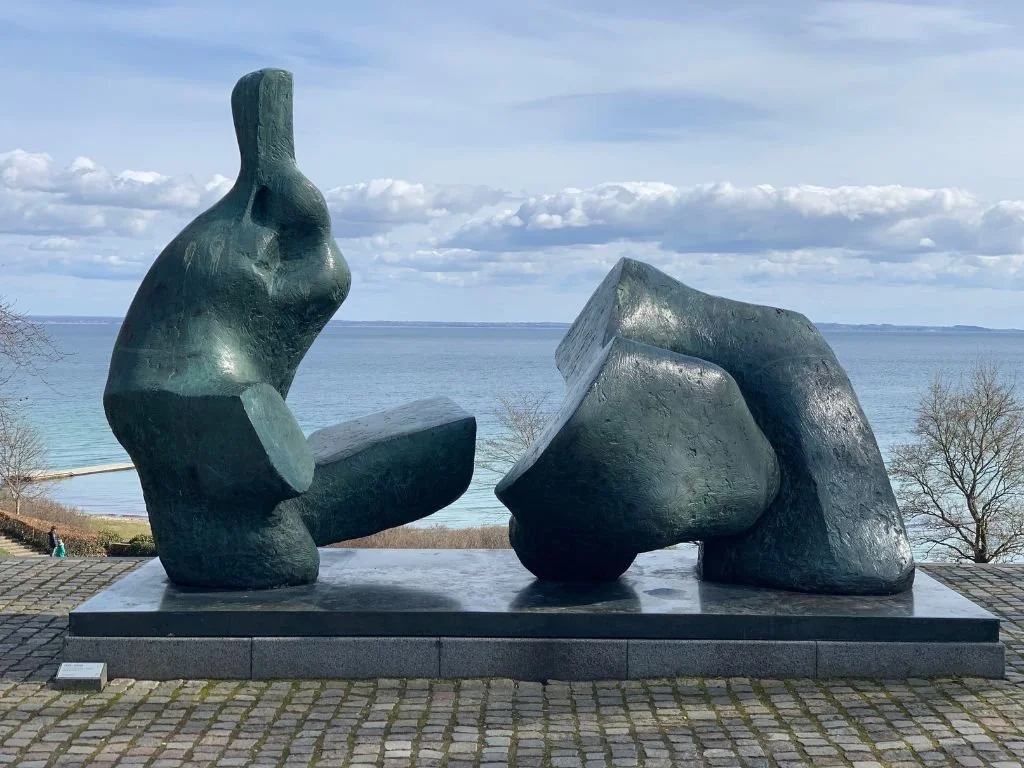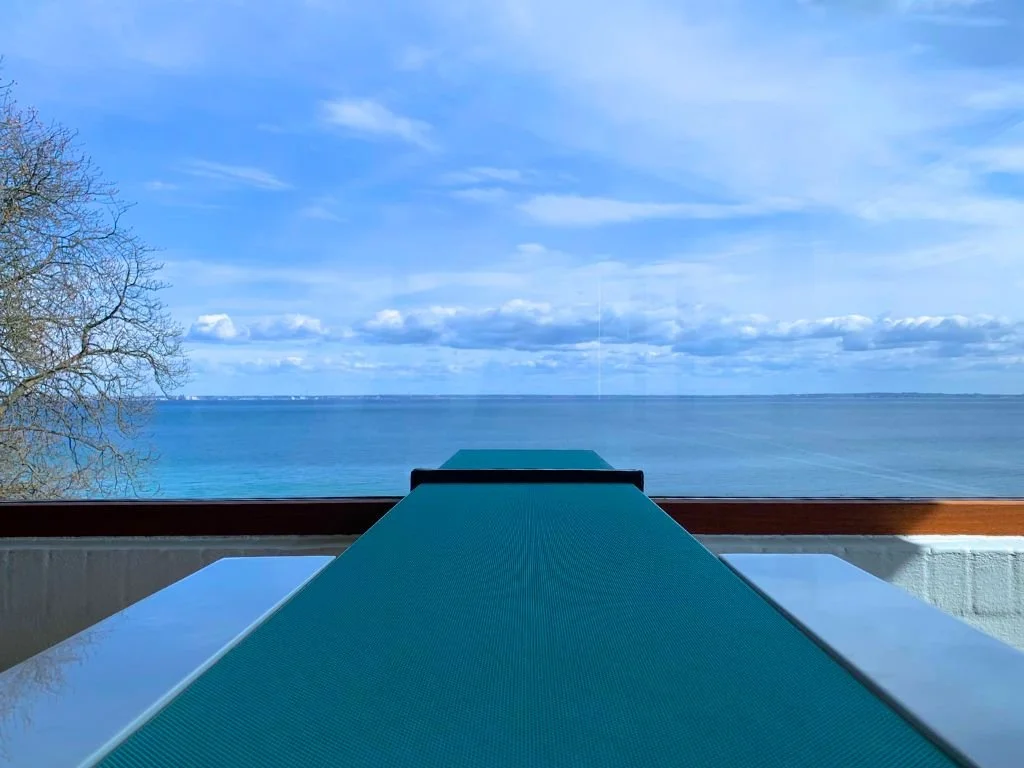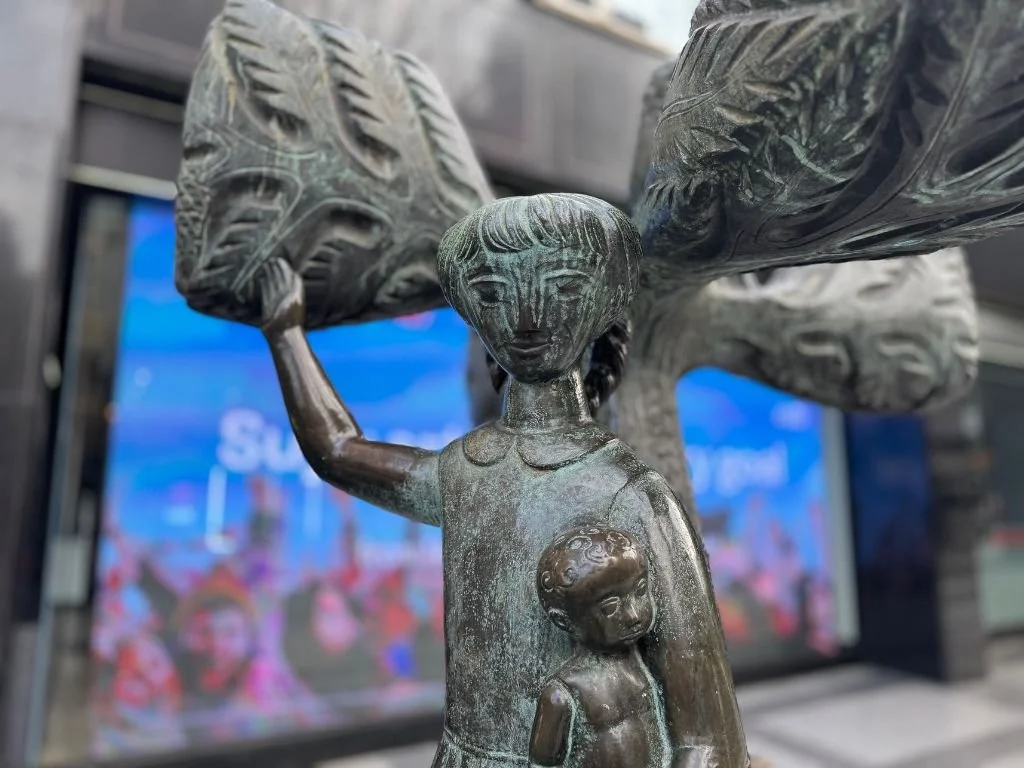Louisiana Museum: The Perfect Copenhagen Day Trip for Art Lovers
Before heading to Copenhagen, a colleague suggested I might be interested in the Louisiana Museum of Modern Art. We’ve always had a soft spot for museums (and libraries, of course) when exploring a new city, so it was already on our radar.
The real clincher came on the ferry back from Copenhagen Contemporary and the Reffen street food hub. We noticed a couple carrying striking Louisiana tote bags and struck up a casual conversation. Was it worth carving out half a day for? The man didn’t hesitate: “Take the whole day. It will change you.” He wasn’t wrong.
A corridor or a frame for nature? Louisiana’s glass walkways make the gardens part of the art.
Despite its name, the Louisiana Museum of Modern Art has nothing to do with the American South. Located in Humlebæk, just north of Copenhagen, it first opened in 1958. Its name stretches back nearly two centuries earlier, when the estate’s owner, hofjægermester Alexander Brun, christened it after his three wives — all called Louise. Talk about having a type.
Today, the Louisiana isn’t just Denmark’s most famous museum of modern art — it’s one of the most beautiful galleries in the world, and easily the perfect Copenhagen day trip for anyone who loves art, architecture, or simply a breathtaking setting.
Getting to the Louisiana Museum
Louisiana is an essential part of any visit to Copenhagen — though technically, it isn’t in Copenhagen itself. From Københavns H. (Copenhagen Central Station), the journey takes just under an hour each way. Hop on the train north for 40–45 minutes and get off at the regional station in Humlebæk.
From there, it’s a 10–15 minute walk to the museum. What struck me most was how suburban and green this stroll felt, a sharp contrast to the stripped-back minimalism of the city. Then, almost suddenly, the path opens up — and the museum reveals itself, tucked between the Danish homes, the trees and the sea.




The Setting: Between the mid-century and the sea
There’s no real set path through Louisiana, and I never felt I needed one. Architects Jørgen Bo and Wilhelm Wohlert’s streamlined late-1950s modernism is so discreet that I seemed to step straight off the street and into the mid-century. With each of the museum’s seven stages of evolution, later supplemented by architect Claus Wohlert, I had the sense of always being connected to the nature surrounding the buildings.
For us, the journey began in the glass-enclosed corridors of the original North Wing. We followed the straight lines of the floor-to-ceiling windows, which framed the greenery as if the landscape itself were part of the collection. Moving on to the South Wing, with its higher ceilings and structure built into the terrain, I almost felt as if I could step directly out into the sea. We lingered at Michael Elmgreen and Ingar Dragset’s Powerless Structures, Fig. 11 — the diving board that bridges interior and exterior — that further blurs the edges and almost makes that illusion real.
I kept finding more such invitations to explore. The curved walls of the South and Children’s Wings, with their windows onto the gardens, opened up new portals that gave us new discoveries at each turn.
When you actually emerge outside, you can see how embedded Louisiana is in nature. It’s a setting that makes the Louisiana Museum one of Copenhagen’s most unforgettable day trips.
The collections
“Louisiana does not collect just to collect,” said museum director Poul Erik Tøjner on the museum’s website. “We do not suffer from compulsive collecting. We collect to show the works to the world… It means that every decision is a choice that has to be argued for.”
Like the space, the collection feels fluid, though there are four main themes — or “focus areas” as they call them — that anchor it. For me, the joy was in stumbling across the works that resonated on the day. You have to have one immersive Kusama experience, right? Gleaming Lights of the Souls had us covered. Just as often we’d turn a corner and casually come face to face with a 1950 Jackson Pollock or a Francis Bacon, or one of Louise Bourgeois’s spiderlike sculptures. César Frankrig’s golden sculpture The Big Thumb gave me the kind of positive affirmation we all need. In quieter moments, I found myself drawn back to Ole Schwalbe’s Portrait of a Painting.
Outside in the sculpture park, Jean Dubuffet’s Manoir d'Essor looks as though it’s been sketched directly onto the landscape. Henry Moore’s Reclining Figure No. 5 (Seagram) looms like a monolithic sentinel guarding the clifftop. Richard Serra’s The Gate in the Gorge, designed specifically for Louisiana, offers a literal passageway between parts of the museum. (Sidebar: we also had the chance to see Serra’s work in New Zealand at Gibbs Farm — Te Tuhirangi Contour carves a dramatic swathe across the verdant hillsides). Two pieces from Alexander Calder add a playful flourish.
From the sculpture park above, the view stretches to the beach and beyond to Sweden.
Beyond art
It’s not often we get to sit and eat lunch on a grassy hill overlooking a beach, with a Joan Miró to our left and the not-too-distant Swedish coastline to our right. (Lest we forget, it’s only a short jaunt from Copenhagen over the Øresund Bridge to Malmö.) If the art ever feels overwhelming, Louisiana also gives you space to simply sit and be. The Lake Garden, for example, is deliberately kept free of sculpture — a third space designed for quiet reflection.
From a bench in the sculpture park, we sat on a crisp spring day watching people wander along the beach below. It was peaceful, the kind of scene that makes you want to linger. We could have stayed there all day. Moments like that are what make Louisiana more than just another museum — they make it a complete day in itself.
Why it stands out
We’ve visited what are arguably some of the greatest galleries in the world. The Louvre has its icons, and from the Pompidou you can see all of Paris. The Rijksmuseum delivers jaw-dropping moments. New York’s MoMA charts the entire history of modern art, while Tasmania’s otherworldly Mona cracks open a dark portal to some future dimension. We’ve spent entire days in the Tate Modern, happily vanishing into its turbine hall again and again. And in New Zealand, Gibbs Farm introduced us to sculpture on a surreal, almost impossible scale.
But Louisiana balances scale, intimacy, and beauty in a way no other museum quite manages. It feels like stepping into someone’s mid-century home, being casually guided through their extraordinary collection, and then invited to linger in their garden overlooking the sea. It favours quality over quantity, harmonising its architecture and setting so completely that it may just be the best gallery in the world.
That fellow on the ferry was right. Once you set foot inside, Louisiana is hard to shake from your system.








